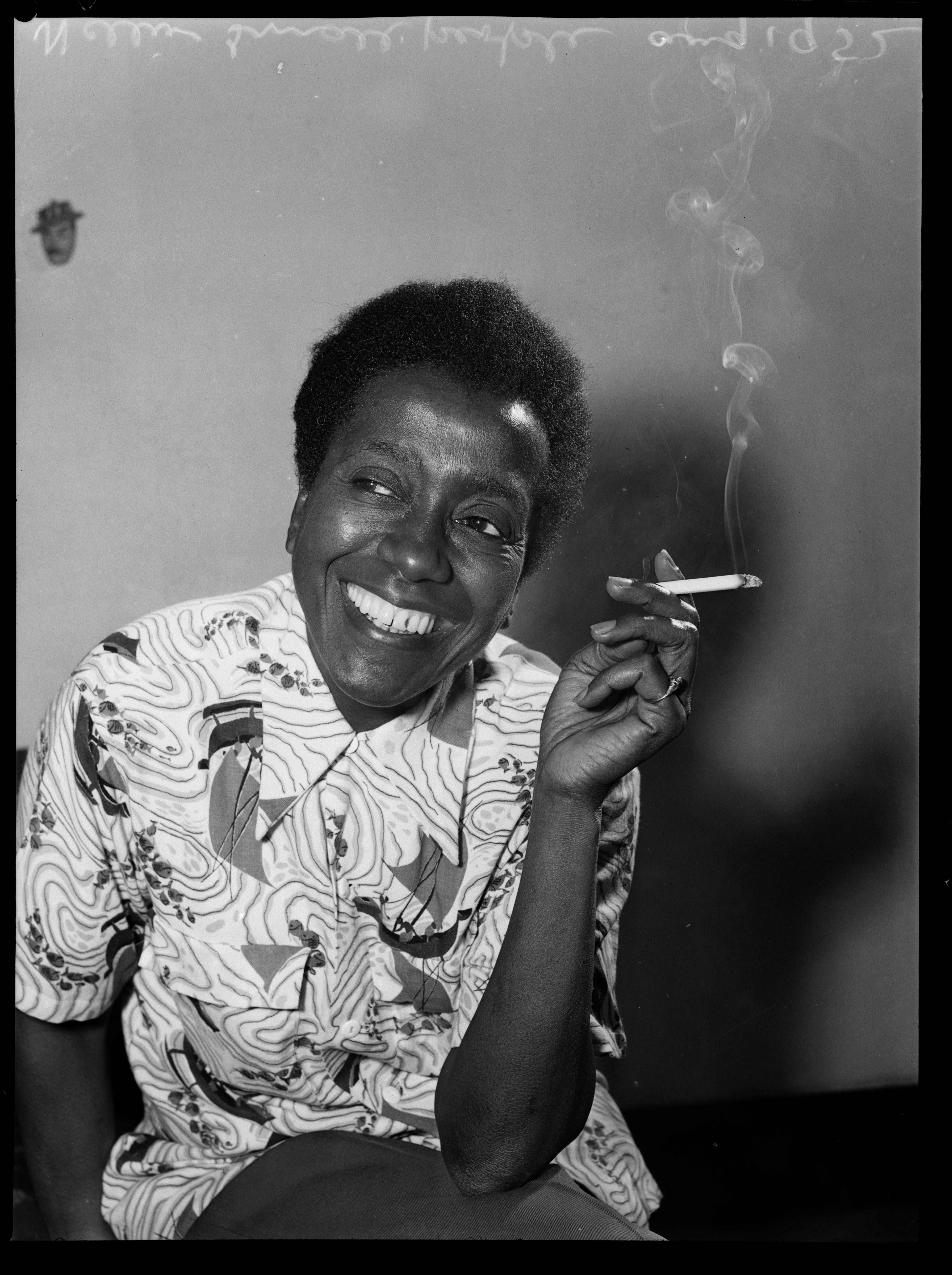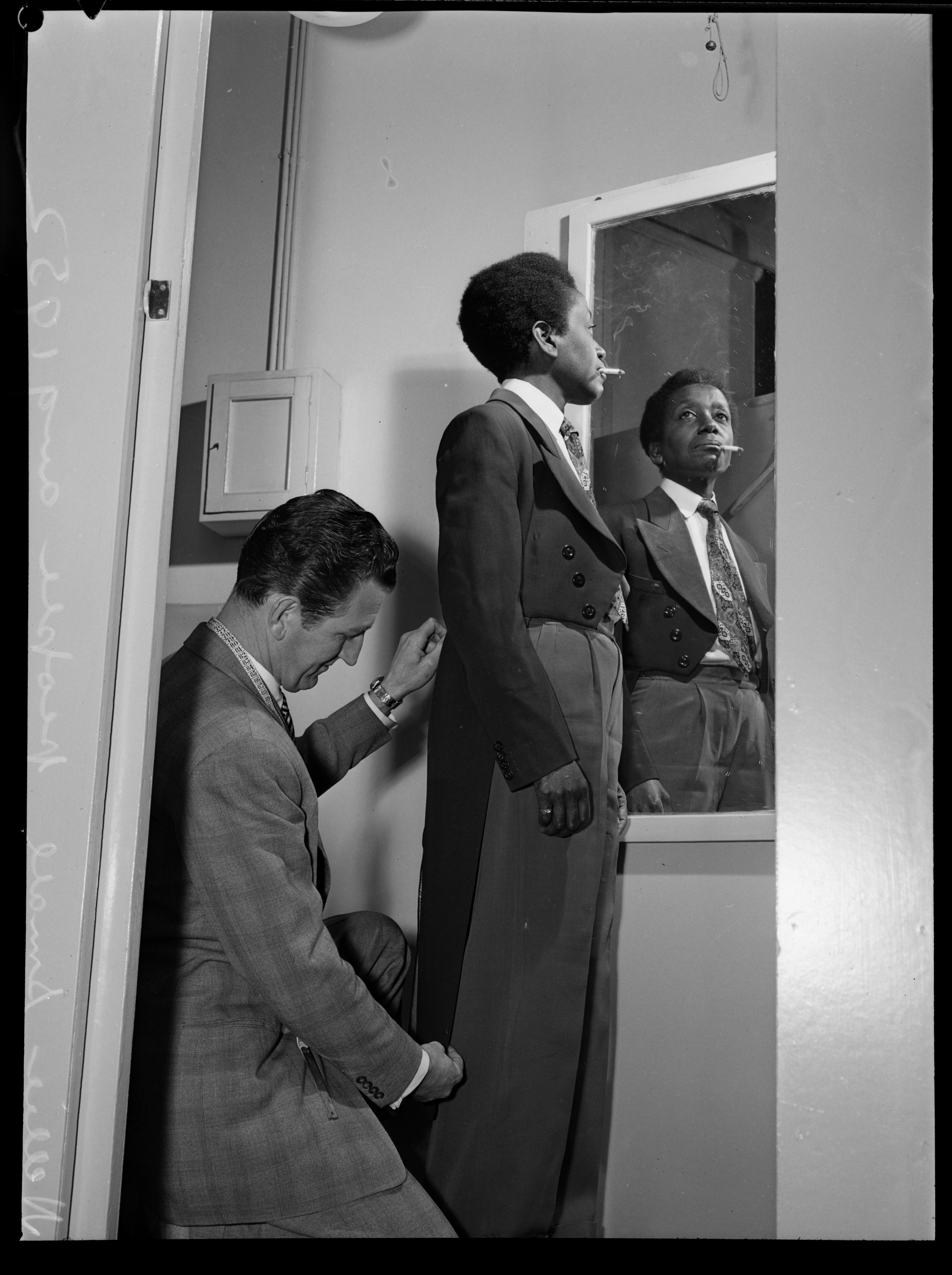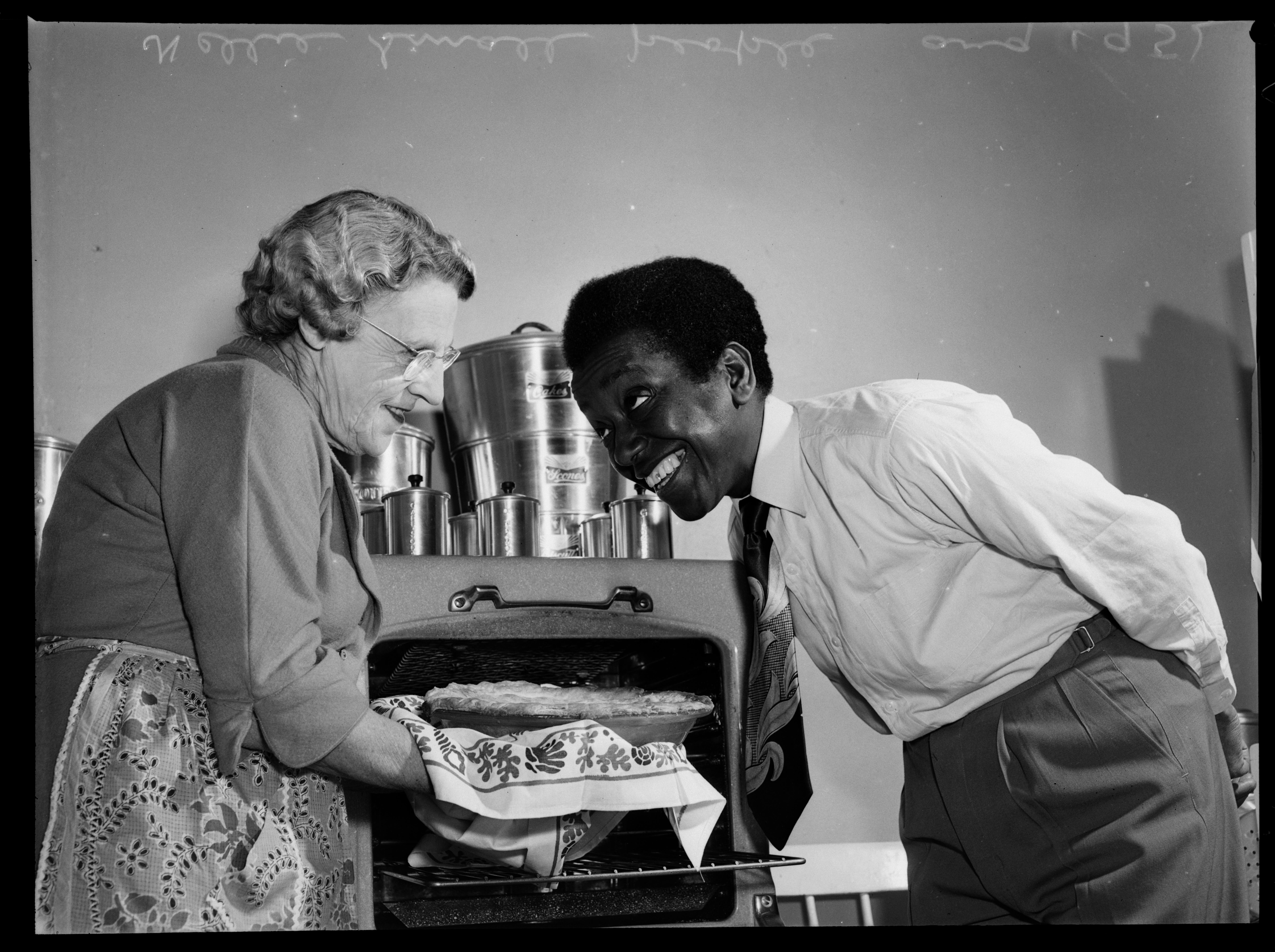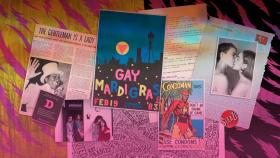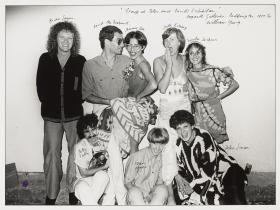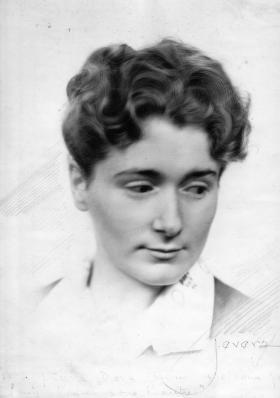There was a catch call in show business circles in those days. When a show was not quite strong enough, they would say ‘send for Nellie’. It was always a sure cure.
I am at the Paddington home of Bobby Limb, a legendary Australian entertainer. The Nellie to whom he is referring is Nellie Small, singer, performer, toast of the town and a 30-year show business stalwart who wore an impeccable top hat and tails on stage, and casual male attire in everyday life.
Was she a lesbian? I asked.
Didn’t know, wouldn’t care, he said evenly. She was a total professional, a beautiful singer and she used her hands expressively as she sang. Later you’d see Shirley Bassey and Lana Cantrell do that but when I saw Nellie it was the first time I’d seen that. There was something about Nellie that stopped the show every night.
It’s 1991 and I am an aspiring playwright. I know nothing about anything. As green as bottle glass. I don’t know what a ‘catch call’ is, I don’t know what it means to ‘stop the show’. All I know is that the theatre seems like a hostile, rarefied, impenetrable business but still, I want to be a part of it. I’m both out and proud but not yet able to shake the shame of my homosexuality. I think it’s going to be a barrier to admission to this cosseted club of theatre makers. I know that female playwrights are still so rare as to be branded with the diminutive epithet ‘lady writer’. I don’t have family or friends in the business, I wasn’t taken to the theatre as a child and I can barely afford to go now. But the longing to be a playwright is in motion within me as strongly as wind whipping the white caps of the sea.
That’s when I read an obituary of Nellie Small. But instead of using words that someone else says about her, let me begin as I mean to continue and tell Nellie’s story using her own words pulled from the archives and those of her contemporaries who I interviewed all those years ago.
I am West Indian on the male side of my family but my great-grandmother settled in Australia way back and my grandmother, my mother and myself were all born in Sydney. My grandfather and father belonged to Barbados and my great-grandfather came from Antigua.
I started in the business when I won an amateur trial in a little theatre in Oxford Street — we used to call it ‘Clays Variety’. In December 1931 I was told that they put on novelty attractions as part of the Christmas shows. I couldn’t see that I was a novelty, but it was pointed out to me that my colour was a novelty. So I went in with Connors and Paul, [theatre producers who revived the Tivoli Circuit], got a job with them, that was one of the few times that I wore a frock in a production. I was singing ‘Am I Blue’ and Queenie Paul got the idea that she should dress me up as a mammie. So away I went, bandana around the head, basket of cotton on the stage. Then when I was on stage for Connors and Paul in 1932 in Melbourne, I’d go out on stage in my male attire and I’d be in my own clothes in the street and people couldn’t reconcile the two. So Queenie Paul suggested I wear male attire on the street. And I was a bit nervous about it, because of laws and all, but I thought I would try it for a week and every time I stopped at a corner, or went into a shop to buy something, people would say ‘there’s Nellie Small’. So then I never looked back.
Nellie said she didn’t go back into female ‘drag’, as she called her hospital issue frilly nightgown, until she was close to death in 1968. Along the way she played the Theatre Royal and the Tivoli in Sydney, and the Tivoli in Melbourne, singing blues and jazz standards ‘On the Sunny Side of the Street’, ‘Dinah’ and ‘Stormy Weather’. During the Second World War, in 1942, she played the Booker T. Washington Club in Albion Street, Surry Hills, which was patronised by both African-American servicemen and First Nations Australians, and later she headlined at Sammy Lee’s in Woollahra.
Nellie played with me and the Port Jackson Jazz Band on our tour of the outback, Jimmy Sommerville told me when I interviewed him in October 1991. She was amazing but don’t kid yourself about how hard it was for her. In some of the regional places, the hotel owners wouldn’t let her stay on the premises. Or they’d make her go through the back, the servants' entrance. In Brisbane she wasn’t allowed into the GPO to pick up her own mail. Then rumours went around that we were all communists so that gave us more grief.
He shook his head and laughed. The closest any of us came to being communists was using the Eureka Hall to rehearse in because it was so cheap!
Jimmy, a talented piano player, told me that Nellie rarely talked about politics and racism, at least not to him. The journalists never shut up about it, always asking her what it was like to be black, did she get heckled? Honestly if they had a brain they’d be dangerous. I mean, this is an artist who played the Ziegfeld Club in King Street, famous for its drag acts, but which had cast-iron music stands across the front of the stage so that the punters couldn’t get to the performers. I was there this one time when some drunken fool just stood in front of her, staring, and Nellie gives him that incredible smile and says, ‘Come sit by me, friend, we don’t eat people anymore!’
Jimmy Sommerville was a magnificent raconteur, proudly showing me photos of himself with long hair, scandalous at the time. Later, Jean Wein, the senior access officer at the National Film and Sound Archive, confirmed Jimmy’s outback tales with a reference to Nellie in the book Black Roots, White Flowers: A history of jazz in Australia. It was Jimmy who first told me about Nellie living with a white family in North Sydney. We all went there for a party, the whole cast of Annie Get Your Gun were there.
The family Jimmy was referring to was that of Nellie’s friend and unofficial manager, Mrs Edith Meggitt, wife of a Sydney furrier. Nellie lived with the Meggitts for more than 20 years and the intriguing Edith Meggitt could apparently be seen in the front row of every one of Nellie’s Sydney performances. An article in People magazine in 1952, ‘The Gentleman is a Lady’, went so far as to suggest that Nellie has a ‘weakness for gaudy ties and socks, which are chosen for her by Mrs Meggitt’. The same article claims that ‘religion has been one of her greatest consolations, an armour against poverty and humiliation’.
I next interviewed June Neary, one of the ‘ballet girls’ who performed behind Nellie at Sammy Lee’s. She recalled Nellie singing ‘St Louis Blues’ and said that Nellie always arrived dressed so she didn’t share the dressing room with June or the other chorus line dancers. She was at pains to tell me that Nellie wasn’t ‘odd’. I travelled to Baulkham Hills to see Mike Sutcliffe, who had an important journal called the Australian Record and Music Review and who generously provided me with a cassette tape (remember, this was 1991) of ‘St Louis Blues’ sung by Bessie Smith. I found a copy of Nellie’s ABC TV ‘Artist’s Engagement Card’ listing her nine ABC TV appearances. Archivist Amanda Hickie tried to find copies of Nellie’ appearances on Hal Lashwood’s Minstrels and Alabama Jubilee but, sadly, they had all been destroyed.
Finally, I travelled to the Performing Arts Museum in Melbourne in January 1992 where archivist Elizabeth Bernard could find no reference to Nellie but allowed me to look through the archives. I knew that Queenie Paul had worked with Nellie so, on a whim, I looked through her papers. Imagine my delight when I found a handwritten reference to Nellie in an old address book. There was also a wonderful exercise book which had been indexed with sticky-taped markers on one edge. The book contained a list of all Queenie’s engagements, with their venues, and a chronological list of the costumes and dresses she had worn. I imagine this meant she could make sure she never wore the same dress to the same venue at too close an interval. I was learning what it meant to be a ‘trouper’.
I gathered up all my research and wrote the first draft of a stage play called Small Mercies. Open Season at the Performance Space in Redfern offered me a staged reading in July 1992. The play was a two-hander about Nellie Small and a First Nations performer, performed by Maroochy Barambah and Lydia Miller. It was directed by Gae Diller-Anderson. I sent it to the Melbourne Theatre Company and received a very polite rejection: As with everything we have read by Alana, good writing and interesting ideas, intellectually and theatrically. But we do not think it would have a wide enough appeal for us to mount a successful production. I sent the play to several other companies, but it never got up. So I moved on to other plays, other projects, other material.
Then, in 2022, my phone rang.
Is that Alana Valentine?
Yes.
This is Catherine Freyne. I’m the Pride (R)evolution Creative Producer at the State Library of NSW. An intern working with us on the exhibition, Madeline Roche, found a small clipping in the archives from 1992 from a publication called Lesbians on the Loose about a play you wrote called Small Mercies. I understand it features a singer called Nellie Small.
Laughing, I said, You should give her a job as a librarian, that’s quite a find!
Catherine laughed and said, The Library has recently acquired an amazing set of photos of Nellie, from People magazine, and I wondered if you’d like to come in and speak to us about bringing Nellie back into the limelight.
I obliged, as Shakespeare would have it, ‘faster than spring-time showers comes thought on thought’.
Nellie’s last gig was at a club in Surfers Paradise called The Playroom in 1964. By that time, she had been living for years on a pension and suffering from ill health which, Bobby Limb told me, was sarcoidosis, an inflammatory disease that affected Nellie’s voice and sent her blind. In a newspaper report about her comeback Nellie admitted that she was ‘financially scraping the bottom of the barrel’.
As part of its Pride (R)evolution exhibition, the Library will be celebrating Nellie’s 33-year career in her own words, through archival recordings and newspaper interviews, as well as the words of her contemporaries, many of whom I interviewed more than 30 years ago.
Nellie Small left an incredible legacy of achievement and made a dynamic and opinionated cultural contribution. Speaking about Dorothy Hall, an Aboriginal dancer who had recently had a season at a Sydney nightclub, Nellie told People magazine in 1952, They turn up their noses at this little girl, yet she’s got more culture in her little finger than they have in their whole bodies. On Adelaide radio in 1954 she mused, I’ve had a lot of arguments about my colour because as soon as they see me people think I must be an American. I played for the Americans during the war and many a time a chappie would come up to me and say, ‘Didn’t I see you in Detroit?’ and I’d say ‘No, you did not’.
I imagine Nellie Small tapping her top hat in place and smiling. My best moments are when the audience goes Oo-ah! as soon as I appear in the spotlight.
Ooh ah, Nellie. Oooh oooh ah!
Alana Valentine is a Helpmann-award winning dramatist working in stage and screen. In 2022 she was co-writer, with Stephen Page, of Bangarra’s dance opera Wudjang: Not the Past, and co-writer, with Christos Tsiolkas, of the Adelaide Festival oratorio Watershed: The Death of Dr Duncan. Also in 2022, her play for Belvoir, Wayside Bride, was in repertory, and she was the writer for Erth Visual and Physical Theatre’s arc at the Sydney Opera House.
This story appears in Openbook summer 2022.

